Normal labour
Labour happens at the end of pregnancy and starts with contractions. There are many factors that go into determining whether a pregnant woman is in active labour or not. As the woman starts to have stronger and stronger contractions, the cervix will undergo softening, effacement, dilation and position.
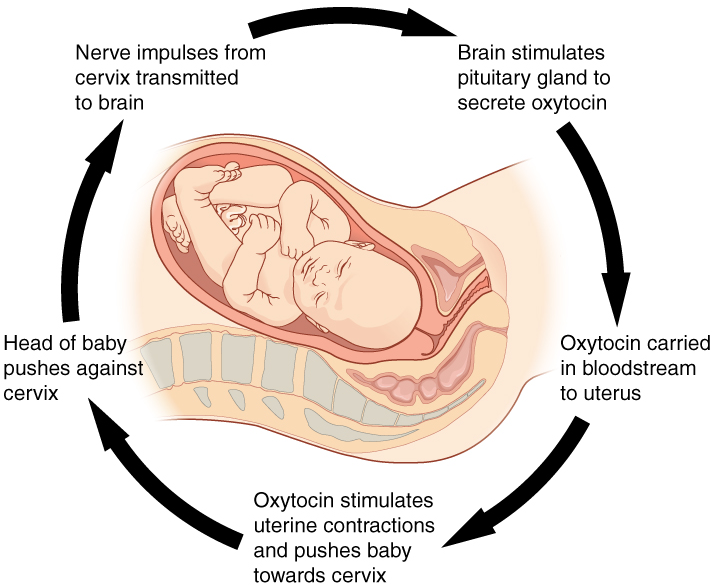
- Softening
- The cervix becomes softer
- Effacement
- Getting shorter
- Dilation
- Wider opening of the internal os
- Position
- Points the baby in the right direction
All of these are triggered by fetal engagement. These are important changes of the cervix and in abnormal labour, a balloon can be used for mechanical stimulation and oxytocin for strengthening the contractions.
Stages of labour
- Stage 1
- Latent phase
- 0-6cm cervical dilation
- Nulliparous
- <20 hours in duration
- Multiparous
- <14 hours in duration
- Active phase
- Starts at 6cm dilation
- Ends at maximum dilation of 10cm
- Nulliparous
- Will progress at 1.2 cm/hr - hard to measure
- Multiparous
- Will progress at 1.5cm/hr
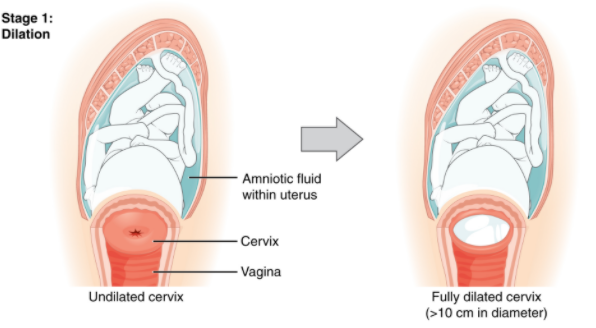
- Latent phase
- Stage 2
- Delivery of the fetus
- Nulliparous
- Will take <3 hours
- Multiparous
- Will take <2 hours
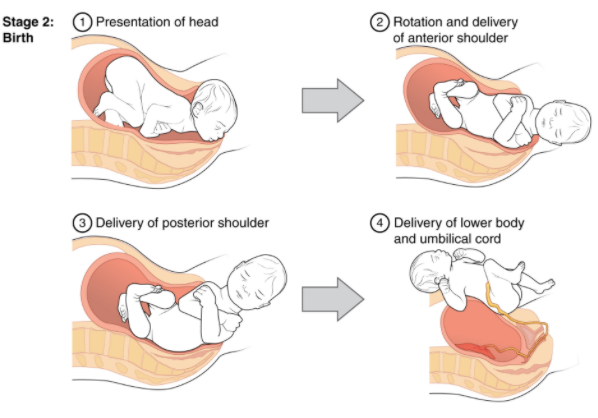
- Stage 3
- Delivery of the placenta
- Will take <30 mins in both nulliparous and multiparous women

- Stage 4
- The end of labour
- The uterus is contracting
Fetal states
- Fetal station
- Fetal position relative to the ischial spines of the mom
- -5 to +5 cm from the ischial spines of the mother
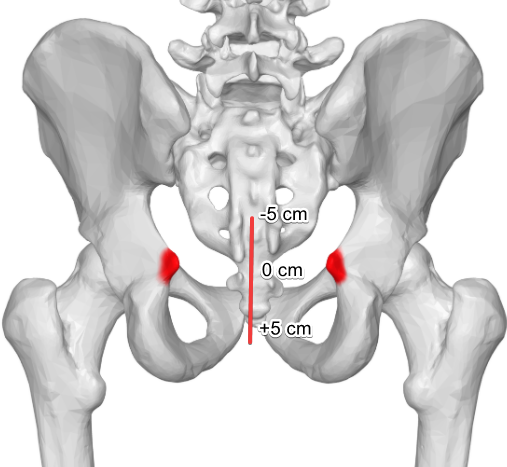
- Cons
- Not all women have the same measurement
- Some places use -3 to +3 which is a subjective scoring system
- Fetal position
- Types
- Longitudinal cephalic
- Longitudinal breech
- Transverse breech
- Breech diagnosis
- Mostly U/S used
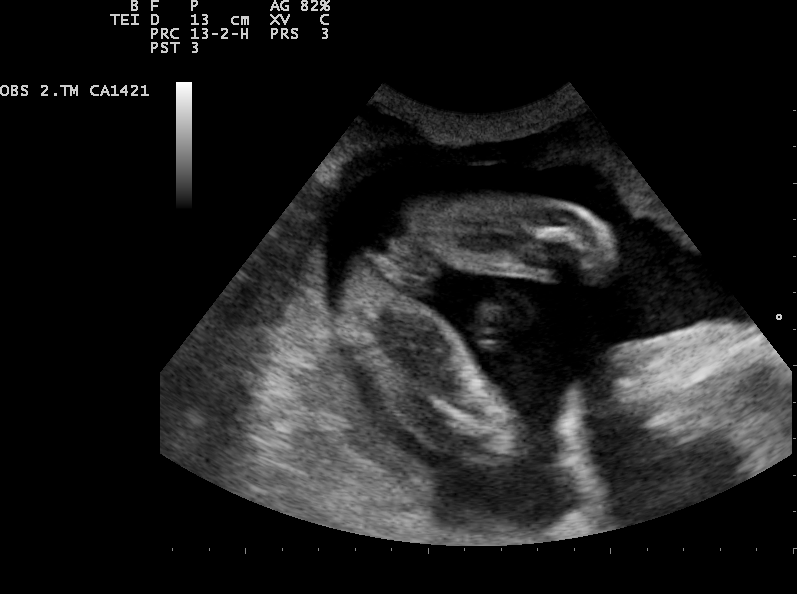
- Management
- C-section
- Breech is the most common reason patients undergo a C-section
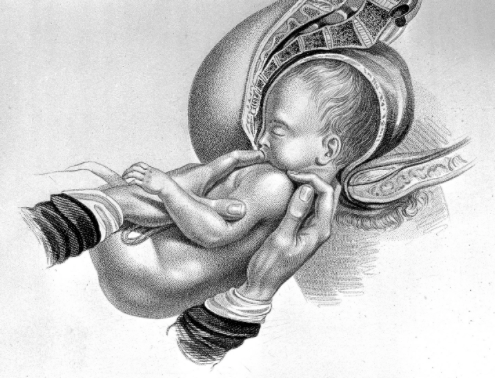
- External version
- Manual attempt from the outside to try to rotate the baby
- Might go back to the breach position
- C-section
- Types
Abnormal labour
Abnormal labour is defined as the prolongation of normal labour or fetal distress. As such there are methods to speed it up to reduce the risks for the infant and the mother.
- Stage 1
- Latent phase
- Balloon
- Can be used for mechanical stimulation of the cervix
- Amniotomy
- Rupture of membranes

- Misoprostol
- Oxytocin induction
- Balloon
- Active phase -
- Passenger
- Cannot control this at the time of labour
- Pelvis
- Cannot control this at the time of labour
- Will require a c-section if this is the problem
- Power
- Oxytocin augmentation can be used to increase the power of contractions and their frequency
- If contractions are happening but the fetus is not progressing = C-section
- Adequate contractions are needed
- 3 contractions in 10 mins
- Abnormal = less than 3 in 30
- New definition
- >200mV in 10 mins is adequate
- An intrauterine pressure catheter is used to measure this value
- <200mV in 10 mins will require augmentation with oxytocin
- If this fails >>> C section
- Oxytocin augmentation can be used to increase the power of contractions and their frequency
- Passenger
- Latent phase
- Stage 2
- Passenger
- Cannot control this at the time of labour
- Pelvis
- Cannot control this at the time of labour
- Will require a c-section if this is the problem
- Power
- Oxytocin augmentation can be used to increase the power of contractions and their frequency
- If arrest happens in stage 2 despite using oxytocin
- If baby position negative (-5 to -1)
- Have to do a C-section
- If baby position positive (+1 to +5)
- Forceps
- Can cause cephalohematomas and Bell's palsy - paralysis of the muscles in the face
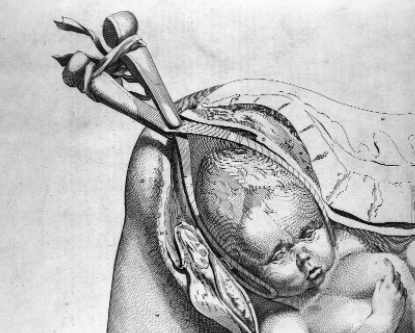
- Vacuum
- Can accidentally hold on to the vagina and cause an injury
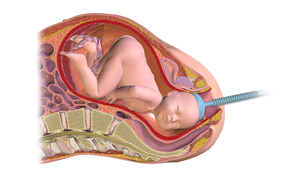
- Forceps
- If baby position negative (-5 to -1)
- Passenger
- Stage 3
- Abnormal if >30 mins
- The baby is out at this point
- Cannot be caused by the passenger or pelvis, as the baby has been delivered
- Oxytocin use during delivery can prolong stage 3
- Management
- Uterine massage
- Oxytocin
- Manual extraction
- May require dilation and curettage (D&C) if some pieces are retained
All information provided on this website is for educational purposes and does not constitute any medical advice. Please speak to you doctor before changing your diet, activity or medications.
